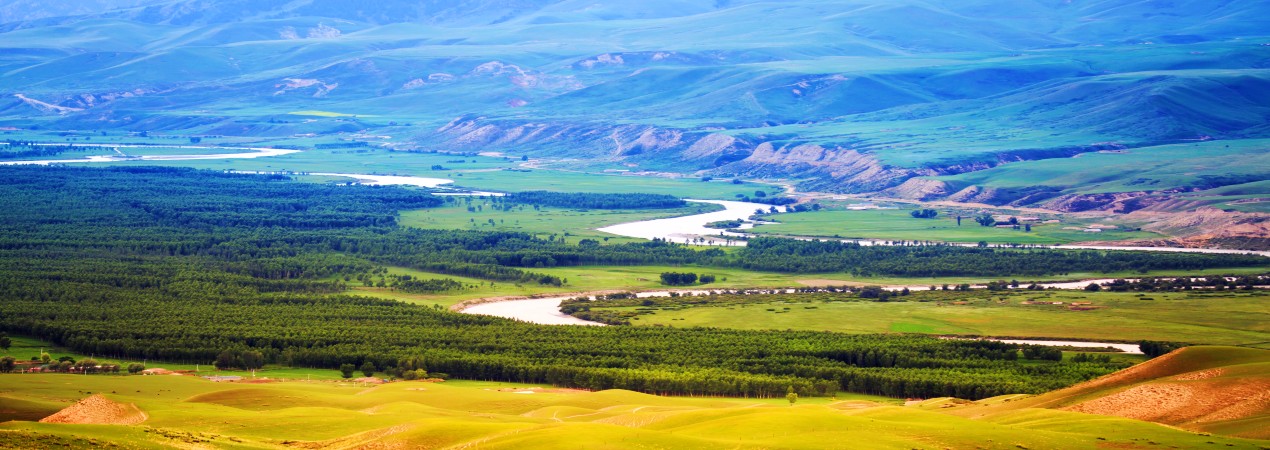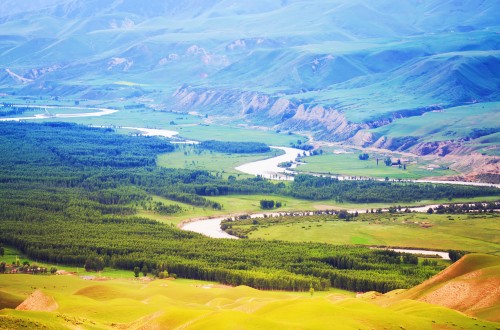Qiongkushitai Grassland

Qiongkushitai is an ancient village inhabited by Kazakhs, and the Qiongkushitai Grassland lies within the village. Situated at an altitude of approximately 2,000-3,000 meters, Qiongkushitai is the best-preserved Kazakh log village in the remaining ranges of the Tianshan Mountains. Snow-capped mountains, spruces, meadows, river valleys and wooden houses interweave to form a fairy-tale scene known as "Little Switzerland of the East". Qiongkushitai Village is also the northern entrance to the Wusun Ancient Trail and an important post station on the Silk Road.
- Chinese name: 琼库什台大草原 Qióng Kù Shí Tái Dà Cǎo Yuán
- Suggested time: 0.5 - 1 day
- Ticket: Free
- Open hours: Open all day
- The best time to visit: June - September
- Address: Qiongkushitai Village, Kaladala Town, Tekes County, Ili Kazakh Autonomous Prefecture, Xinjiang Uygur Autonomous Region, China
- How to get there: It is recommended to drive by yourself or join a tour group.
Highlights of Qiongkushitai Grassland
Wusun Ancient Trail
 Qiongkushitai Grassland
Qiongkushitai Grassland
Paradise Lake
Paradise Lake is located on the Wusun Ancient Trail in Xinjiang. With a high sky and sparse clouds, its waters are clear and blue, like an emerald inlaid on the plateau—hence its name. Sitting at an altitude of 3,100 meters, the lake covers a total area of 2.81 square kilometers and is shaped like a crescent moon. Surrounded by snow-capped mountains, its waters shine as blue as emeralds. When wildflowers bloom across the lakeside meadows, they complement the spruce forests and wooden houses, creating a scene straight out of a fairyland.
Characteristic Houses
Qiongkushitai has preserved a large number of wooden houses with Kazakh characteristics, most of which were built in the 1950s and 1960s. They are constructed with whole logs and have steeply sloped roofs, which offer excellent rainproof and thermal insulation functions. Walking through the village, you can observe the unique structure of the wooden houses up close and appreciate the architectural wisdom of the villagers.
Educational Value
Qiongkushitai Village is one of the most well-preserved Kazakh wooden structure complexes in the Ili River Valley. These dwellings have witnessed the transformation of the Kazakh people from nomadic to semi-settled life since the 19th century. Their construction techniques (such as log splicing and roof slope design) have been passed down through families to this day. They are vivid carriers of nomadic culture at the material level and provide important physical samples for studying the history of ethnic minority architecture and the evolution of human settlements.
Activities to do at Qiongkushitai Grassland
Handicraft experience: Participate in wool felt making or embroidery in homestays, and make simple nomadic handicrafts with local wool.
Hiking: Hike along the route from Qiongkushitai Village to Kalajun Grassland, cross the "Human Body Grassland", and appreciate the unique landforms where gullies and light and shadow interweave.
Drop us a line and we'll connect you with the top China expert in no time!